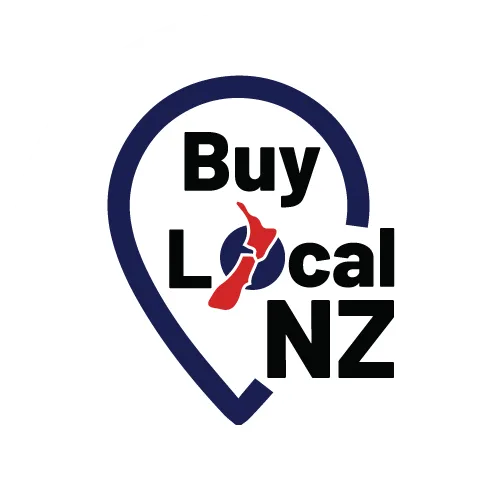
5 Best Customer Messaging Platforms For Business Growth
You'll find powerful growth potential in top customer messaging platforms like WhatsApp Business, Drift, and similar solutions that offer automated responses, multi-channel support, and robust analytics. These platforms help you manage customer communications efficiently while maintaining brand consistency and tracking performance metrics. Look for options that integrate with your existing tools and match your budget. Discover which key features and pricing models will best serve your business objectives.
Key Points
- WhatsApp Business offers free basic services and broad reach, making it ideal for small businesses starting with automated messaging.
- Drift leverages AI-powered automation to increase conversion rates through personalised customer interactions and proactive engagement.
- Intercom provides comprehensive analytics, customisable templates, and multi-channel support for scaling businesses needing robust features.
- HubSpot's messaging platform integrates seamlessly with CRM systems and offers advanced tracking capabilities for data-driven communication strategies.
- Zendesk combines messaging tools with customer service features, enabling businesses to manage all communication channels from one platform.
Why Small Businesses Need Automated Messaging Tools
Nearly every small business faces the challenge of managing customer communications efficiently while keeping costs low. You can't afford to miss customer inquiries or delay responses, as these missteps often lead to lost sales and damaged relationships.
That's where automated messaging tools become your secret weapon for growth. These platforms free you from the constant drain of manual responses, allowing you to focus on strategic tasks while maintaining consistent customer engagement.
You'll reach more prospects, respond faster, and build stronger connections without increasing your workforce. With automated messaging, you can scale your communication efforts, track customer interactions, and deliver personalised experiences that boost loyalty.
The right messaging tool transforms your business from reactive to proactive, giving you the power to compete with larger companies.
How to Choose the Right Messaging Platform
With countless messaging platforms available today, selecting the right one for your business requires careful evaluation of your unique needs and goals. Focus on platforms that align with your customer communication strategy and scale with your growth.
| Feature to Evaluate | Why It Matters | Impact on Business |
|---|---|---|
| Integration Capability | Connects with existing tools | Streamlines workflows |
| Customisation Options | Matches brand identity | Builds recognition |
| Analytics Tools | Tracks performance metrics | Drives improvements |
| Security Features | Protects sensitive data | Builds trust |
| Pricing Structure | Fits budget constraints | Controls costs |
When evaluating platforms, test their user interface, support quality, and mobile responsiveness. Remember that the best solution isn't always the most expensive one - it's the one that empowers your team while delivering value to your customers.
Top Features to Look for in Business Messaging Systems
After identifying the right messaging platform for your business, understanding specific features that drive success becomes your next priority.
Look for systems that offer seamless integration with your existing tools, robust analytics to track engagement, and automated response capabilities that free up your time.
Your messaging platform should include customisable templates that maintain brand consistency while allowing personalisation.
Prioritise features like multi-channel support, enabling you to connect with customers across various platforms without switching interfaces.
Real-time collaboration tools let your team work together efficiently, while advanced security features protect sensitive conversations.
Don't overlook the importance of scalability - choose a platform that grows with your business.
Smart queuing, AI-powered routing, and thorough customer history tracking empower you to deliver faster, more meaningful responses.
Comparing Costs and ROI of Popular Messaging Platforms
Understanding the cost structure and return on investment of messaging platforms can make or break your business communications strategy.
The right messaging platform investment can transform your communication strategy from a cost center into a revenue-driving powerhouse.
You'll find that most platforms offer tiered pricing based on message volume, user seats, and feature access.
WhatsApp Business starts free but scales up for advanced features, while Intercom's pricing begins at $39/month and increases based on your contact list.
Zendesk's messaging suite ranges from $49 to $215 per agent monthly, offering extensive integration options.
Drift's conversational marketing platform starts at $50/month but delivers higher conversion rates through AI-powered automation.
To maximise ROI, focus on platforms that align with your growth goals.
Track metrics like response time, conversion rates, and customer satisfaction scores.
Consider the platform's ability to scale without significant cost increases as your business expands.
Setting Up Your First Business Messaging Campaign
Ready to launch your first business messaging campaign? Break free from traditional communication barriers by following these essential steps to connect with your audience effectively.
First, define your campaign goals and identify your target audience's preferred messaging channels.
Then, craft your core message with a clear call-to-action that resonates with your audience's needs and desires. Choose a messaging platform that aligns with your goals and budget from the options we compared earlier.
Set up your contact list, ensuring compliance with messaging regulations and opt-in requirements.
Test your campaign with a small segment of your audience, analysing metrics like open rates and engagement.
Finally, launch your campaign and monitor results in real-time, making adjustments to optimise performance and maximise your impact.
FAQs
How Long Does It Take to Train Staff on a New Messaging Platform?
You'll need 2-4 weeks to get your team fully comfortable with a new messaging platform, though basic functions can be learned within 1-2 days of hands-on practice.
Can Customers Opt Out of Automated Messages Without Damaging Business Relationships?
You can respect customer autonomy by providing clear opt-out options in every message. Making it easy to unsubscribe shows you value their preferences, which actually strengthens trust and relationships.
What Security Certifications Should a Messaging Platform Have for Healthcare Businesses?
With healthcare data breaches up 55% in 2020, you'll need platforms with HIPAA compliance, SOC 2 certification, and end-to-end encryption to protect patient information and maintain your practice's integrity.
How Often Should Businesses Update Their Automated Message Content and Scripts?
You'll want to review and update your automated messages every 2-3 months, or immediately when business policies change. Stay responsive to customer feedback and emerging trends to maintain effectiveness.
Can Messaging Platforms Integrate With Legacy Customer Relationship Management Systems?
You'll find most modern messaging platforms offer robust CRM integration capabilities through APIs and connectors, letting you sync your legacy systems with new communication tools for seamless data flow.
In Summary
Don't let choosing a messaging platform become a needle in a haystack. By focusing on your specific business needs, budget, and customer communication goals, you'll find the right solution to automate and streamline your conversations. Whether you're just starting out or scaling up, implementing an effective messaging system can transform your customer relationships and drive sustainable growth for your business.

